Last week, the Italian government reopened the embassy in Tripoli, the first to do so after the majority of Libya’s embassies closed in 2015. A number of Libyans exploited the news with a media war and talk of neo-colonialism. They couldn’t be more wrong, but the Italians were wrong in their timing as well.
Divided between Tripolitania, Cyrenaica, and Fezzan, the situation in Libya today is very similar to when the Italians colonized the country in 1911. And it is, again, on the brink of war. Sources report that the Tripoli Revolutionaries’ Brigade and its leader, Haitham Tajouri, declared a state of emergency after the seizure of the Ministries of Defense; Labour; and Martyrs, Wounded, and Missing, while the presidency council’s Prime Minister Fayez al-Sarraj was in Cairo meeting Egyptian President Abdel-Fattah el-Sisi. This is just the latest move by militiamen backing Khalifa Ghwell and his resurrected Government of National Salvation. For months, Ghwell has been arguing that the presidency council and the Government of National Accord (GNA) has failed and that the Skhirat agreement is dead because, in reality, it was never born by the Libyan government. This is the root of the problem in Libya: foreign intervention. But the international community doesn’t seem to understand. To that effect, the Libya Political Dialogue is set to meet in Tunis on January 18, where no foreign governments have been invited.
In the meantime, the situation on the ground is dire: In addition to Libya’s ongoing problems, this winter has been particularly harsh and has worsened, if possible, al-Sarraj’s political standing in Tripolitania. In the writing of this post, Tripoli had been plunged into darkness going on 24 hours, forcing residents to use charcoal. There is also a serious lack of water. This is the state of Libya’s capital today.
On the other side stand Field Marshal Khalifa Haftar and his old friends: Russia, Egypt, and the Emirates. Each of them support the GNA on paper, but in reality do exactly the opposite, while the majority of nations that supported the GNA are silent. Actions speak louder than words, and this is enough in realpolitik. In the quiet before the storm, only one country has taken al-Sarraj’s side: Italy.
The last to leave and the first to come back
Italy reopened the embassy after Italian Interior Minister Marco Minniti announced the decision last week. The embassies in Libya closed in 2015. Italians were the last to leave the country and, now, the first to come back. But this step is fraught with implications.
Minniti has to solve the big issue of arrivals from North Africa. In 2016, Italy had to deal with a record number of 181,000 migrants, and the outlook for 2017 does not appear to be any better. The number of migrants has grown exponentially from year to year, and not only after Gadhafi’s death. In 2008, in fact, Italian Prime Minister Silvio Berlusconi reached an agreement with the rais (leadership) of Libya which, in essence, went like this: As an apology for the Italian occupation of Libya between 1911 and 1943, Italy would pay Libya $5 billion over 25 years, and build part of its roads and infrastructures. In exchange, Libya would close its coasts to migrants. The agreement seemed to work. But then Gadhafi was murdered and Libya descended into chaos.
Minniti’s intentions are clear: to fight illegal immigration and any crime that may ensue, and to build a new era of cooperation between Libya and Italy. But why open the embassy at this particular moment, when Libya is on the verge of another war between its east and west? Why now, given the fact that al-Sarraj seems to have lost the little influence he had on the dozens of militias—most of them Islamists—scattered in the capital? Many of them, also in the east, have begun saying that this is another Italian occupation. What do they mean?
Libyan “pacification”
After the Adwa disaster of 1896, Italy’s colonial policy was weak, and so the time came to do something about it. Lagging behind the rest of the West, the possession of Libya would put Italy in a favorable position on the Mediterranean chessboard, as well as the international one. At the same time, it would redeem the shame of Adwa. In a world primarily based on geopolitical considerations, this was no small thing.
The war against the Ottoman Empire for the possession of Libya started in 1911 and was won in less than a year. Not considered, however, was the resistance by Libyan tribes for the freedom of their land. The Libyan insurgency against the Italian Royal Army started immediately. But with the emergence of fascism in Italy, the tables once again turned and Libya’s colonization became an urgent priority for the aggressive and imperialist leader, Benito Mussolini. Italy was not to “be outdone,” no matter how and when, or who had to pay for that.
From 1922 to 1931, the so-called Libyan “pacification” proceeded effectively. One of the most successful counterinsurgencies in Western history, the “pacification” process involved three main moves in the Libyan theater: the installation of a barbed wire fence 170 miles long to strengthen the border with Egypt (hitherto a natural safe haven for Sanusi guerrillas); the displacement, and subsequent disarmament, of about 100,000 civilians of the semi-nomadic tribes of Cyrenaic Jebel (those who still gave problems in terms of resistance to the Italian government) in a dozen concentration camps on the coast between Sirte and Benghazi; and the “decapitation” of the rebel leadership, starting first with the execution of Omar al-Mukthar and then all of his potential successors.
These radical measures were disastrous for the population and absolutely condemnable in humanitarian terms. That said, they proved to be the trump card in defeating an endemic rebellion that was deeply rooted and, until then, seemingly unstoppable. In military terms, the ruthless actions of Badoglio and Graziani led quickly to the complete elimination of even the most recidivist outbreaks of the insurgency. Italians won, but at a high price: Libya’s population was reduced by tens of thousands of individuals, weakened by decades of war and impoverished by the almost total removal of cattle and destruction of its few crops. Libya had been “pacified” by the Italians, but at the same time, the seeds of further discord had been sown.
What it all means
Just last week, the Salvation Government of Khalifa Ghwell asked Italian Prime Minister Paolo Gentiloni to pull its troops out of Misrata Airbase, stating that “Italy has a colonial history of fascists,” after highly-respected Giuseppe Perrone, the new Italian ambassador in Libya, reopened the embassy in Tripoli. At that point, the foreign ministry of the interim government in east Libya denounced the return of Italians on Libyan soil, calling it a military offensive. Abdullah al-Thinni’s government sent a “very urgent” diplomatic note to all Libyan embassies and consulates abroad to inform them that, “An Italian military vessel loaded with soldiers and ammunition has entered the Libyan territorial waters. It is a clear violation of UN charter and a form of repeated aggression.”
At another time, the Italian move would have been seen as an act of meaningful courage, but considering the silence of the international community, it now appears an incredibly dangerous gamble, because it’s Italy, and Libyans have not forgotten history. But Libyans should also remember that Italians won the guerrilla war against them because they were internally divided. The idea of a confederal state, like so many in the world, was actually born from the knowledge of their ancestral divisions, and it’s not pie in the sky. If Libyans do not decide to change their approach, this will be the only solution. Realpolitik is rooted in history. And in the DNA of a population.
The Brookings Institution is committed to quality, independence, and impact.
We are supported by a diverse array of funders. In line with our values and policies, each Brookings publication represents the sole views of its author(s).

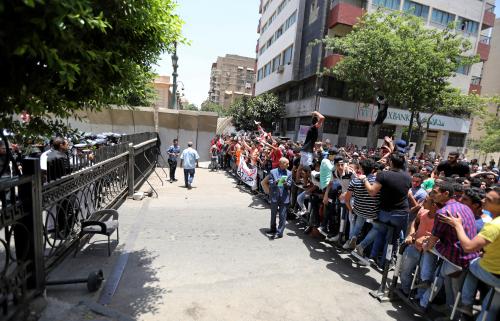
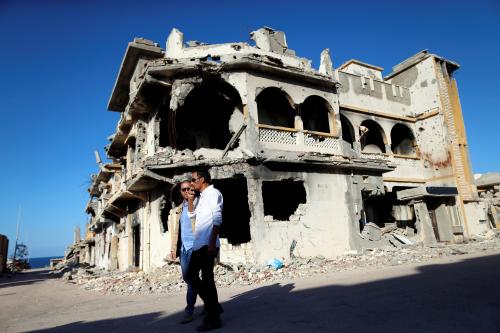
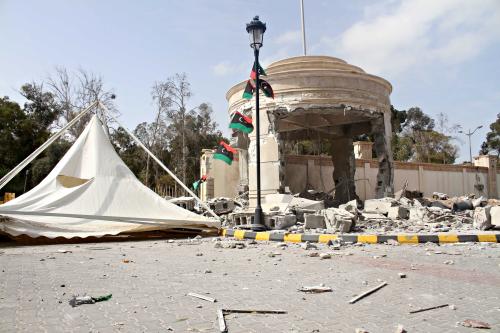
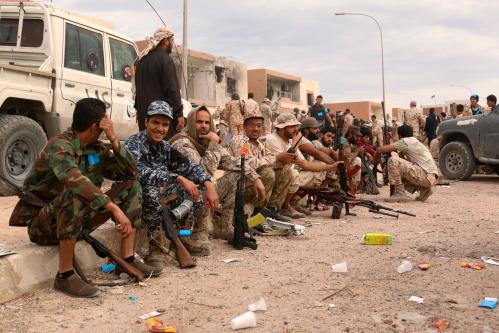

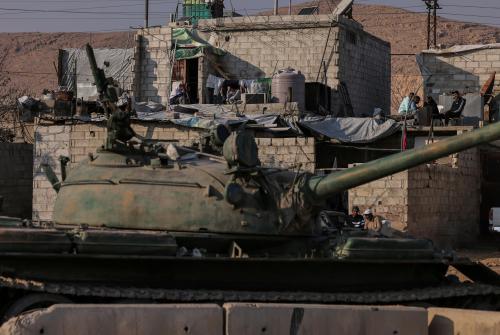
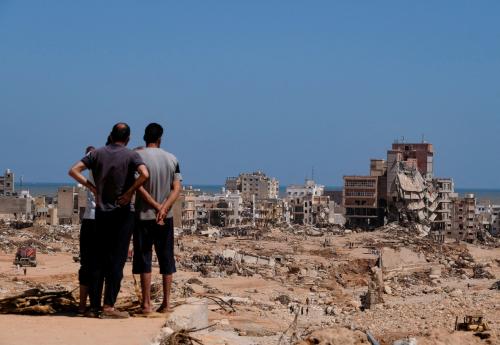

Commentary
Libyans haven’t forgotten history
January 18, 2017